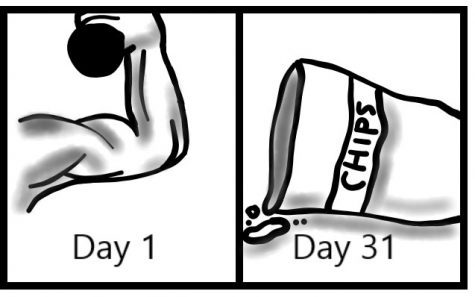New year, new me? Not entirely.
“THIS YEAR, I AM GOING TO LOSE WEIGHT,” she shouts into the crowd of others waiting for the ball to drop. “I’m not going to procrastinate!” “I’m going to eat healthier!” “I’m going to be nicer!” “I’m going to volunteer more!” However, they never did.
Many New Year’s resolutions are broken before the ball even drops and many more are lost before January is over. According to Statistic Brain, a research institute for statistics, only 9.2 percent of resolutions are completed before the year’s end. The issue with many resolutions is that they are often too vague and require too much time. Other people get sidetracked, slip up, or just forget about them all together.
New Year’s resolutions are really just year-long goals.Thus, we should treat them as goals by putting them into the SMART format—the same tool used
 by many of our teachers. SMART stands for “Specific,” “Measurable,” “Achievable,” “Realistic,” and “Timely.” When a goal has all of these components, it is more tailored to the creator and easier to keep.
by many of our teachers. SMART stands for “Specific,” “Measurable,” “Achievable,” “Realistic,” and “Timely.” When a goal has all of these components, it is more tailored to the creator and easier to keep.
To add the “specific” piece is easy; all you have to do is make it more precise. For example, instead of “I want to lose weight” you might say “I want to lose 10 pounds.” A good cheat sheet is to think about the five questions who, what, when, where, why and answer them in your goal. Making them more specific will make them easier to follow, and they could be used to follow along closely with the progress or drawbacks of the process.
Making resolutions for shorter periods of time will help make procrastinating more difficult. To make a goal timely, you need to think about how much time you will need to complete the goal, but don’t give yourself too much time because that can cause procrastination. Try giving yourself a reasonable time that is as soon as you can make it.
For example, you might say, “By April 1, I will lose 10 pounds. I will use a scale to measure my weight now and on April 1. To do this, I will start running four days a week to exert 500 calories and decrease my intake by 500 calories so that way each week I will have 7,000 fewer calories, resulting in two pounds of fat loss.” Putting resolutions into the SMART goal format will also help solve the question of “how.” Setting a measurable goal will give the goal setter a better idea of where to start and how to make the goal last. To add in a measurable aspect you need to put in numbers and ways to measure out what you want to complete, so if you wanted to lose weight a more measurable way to say that would be to say, “I want to lose X amount of pounds. I will measure by a scale.”
Adding the attainable piece can be difficult unless you just think of it as what will you need to accomplish this goal. There are many different items that can be used to measure a goal. When writing your goal, write down exactly what you will need and how you are going to get that item if you don’t already have it.
Resolutions should be more realistic, using time frames and quantitative goals. With these components, goals will feel more optimistic and setbacks won’t feel so detrimental. Being realistic with goals can be extremely difficult, however the easiest way to be realistic is to research your goal so you can set a practical time limit or expectation for yourself.
Maybe this year more resolutions will actually be completed. If people use the SMART format goals, these goals will feel easier to attempt. The resolutions for this year are made for success with the SMART format. This year she can lose weight, he can stop procrastinating, they can be nicer, healthier, and volunteer more.
Your donation will support the student journalists of West Albany High School. Your contribution will allow us to purchase equipment and cover our annual website hosting costs.







